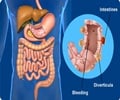Research team combined the use of special type of microscopy that uses a 3D sheet of light that renders tissue optically transparent, and deep-learning algorithms to know more about adipose tissue.

‘Some adipose tissues are more prone to inflammation, leading to diseases like type 2 diabetes, cancer and cardiovascular disorders and help direct future drug therapies to treat obesity.’
Read More..




In a new study, University of Illinois Urbana Champaign bioengineering professors Andrew Smith and Mark A. Anastasio, molecular and integrative physiology professor Erik Nelson and nutritional sciences professor Kelly Swanson detail the use of the new technique in mice. The results are published in the journal Science Advances.Read More..
Inflammation in adipose tissue presents itself as round complexes of inflammatory tissue called crownlike structures. Previous studies have shown that body fat that contains these structures is associated with worse outcomes of obesity and related metabolic disorders, the study reports.
Previously, researchers were confined to the use of 2D slices of tissue and traditional microscopy, limiting what researchers could learn about them.
To get a better view, the team combined a special type of microscopy that uses a 3D sheet of light rather than a beam, a fat-clearing technique that renders tissue optically transparent, and deep-learning algorithms that help process the large amount of imaging data produced.
The researchers found that the crownlike appearances that gives these structures their name are, in reality, more like 3D shells or concentric spheres surrounding an empty core, Smith said.
Advertisement
This ability led the team to discover that obesity tends to be associated with a prevalence of rare, massive crownlike structures that are not present in the lean state.
Advertisement
Smith said the research may lead to new drug therapies and new ways to evaluate patients' metabolic health.
"Right now, we know that some patients are overweight but metabolically healthy, while others are underweight and metabolically unhealthy," Smith said. "We believe that having the ability to look deep into the microenvironments with fat tissue may unlock some of the reasons why this is."
Source-Eurekalert












